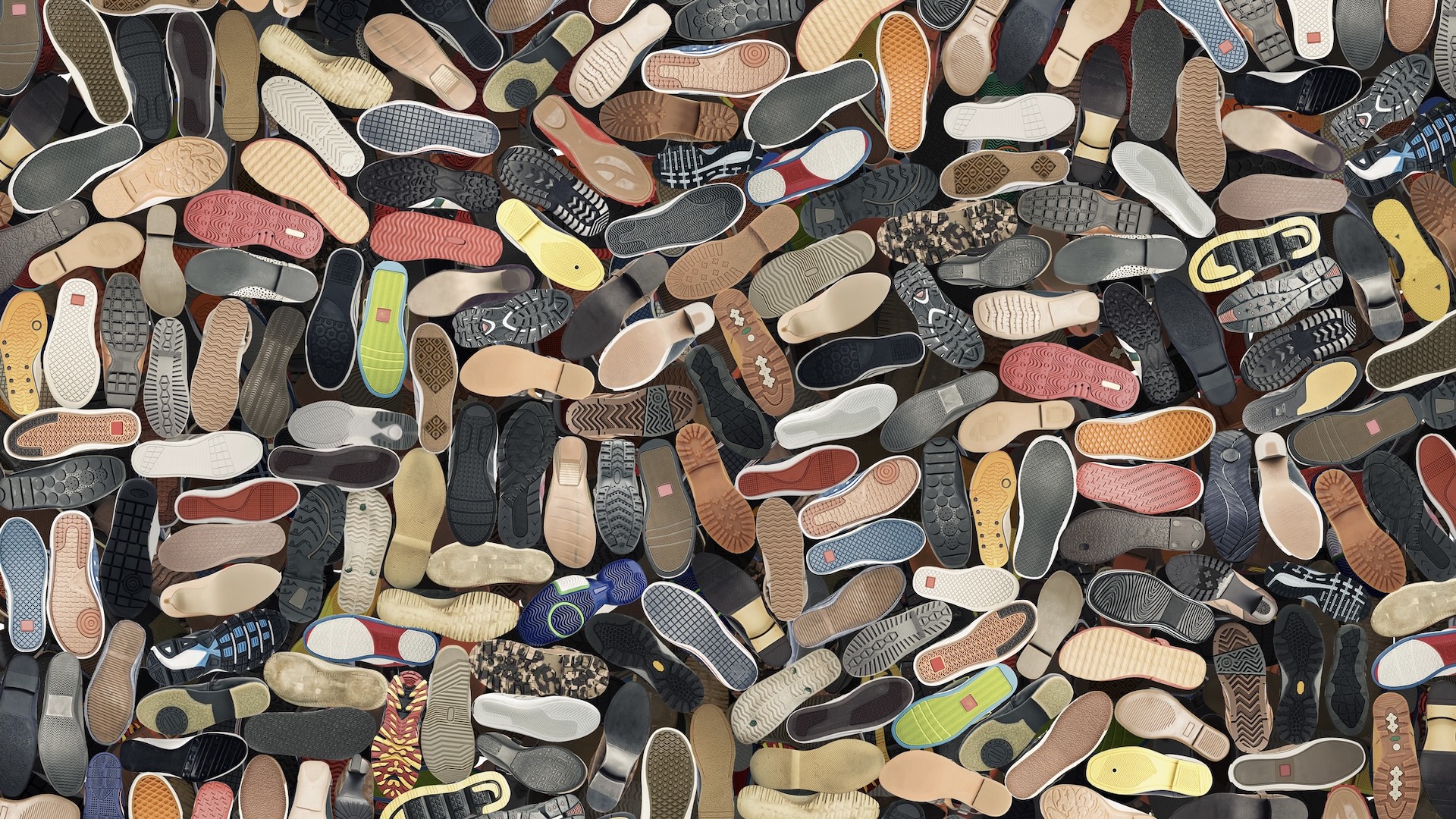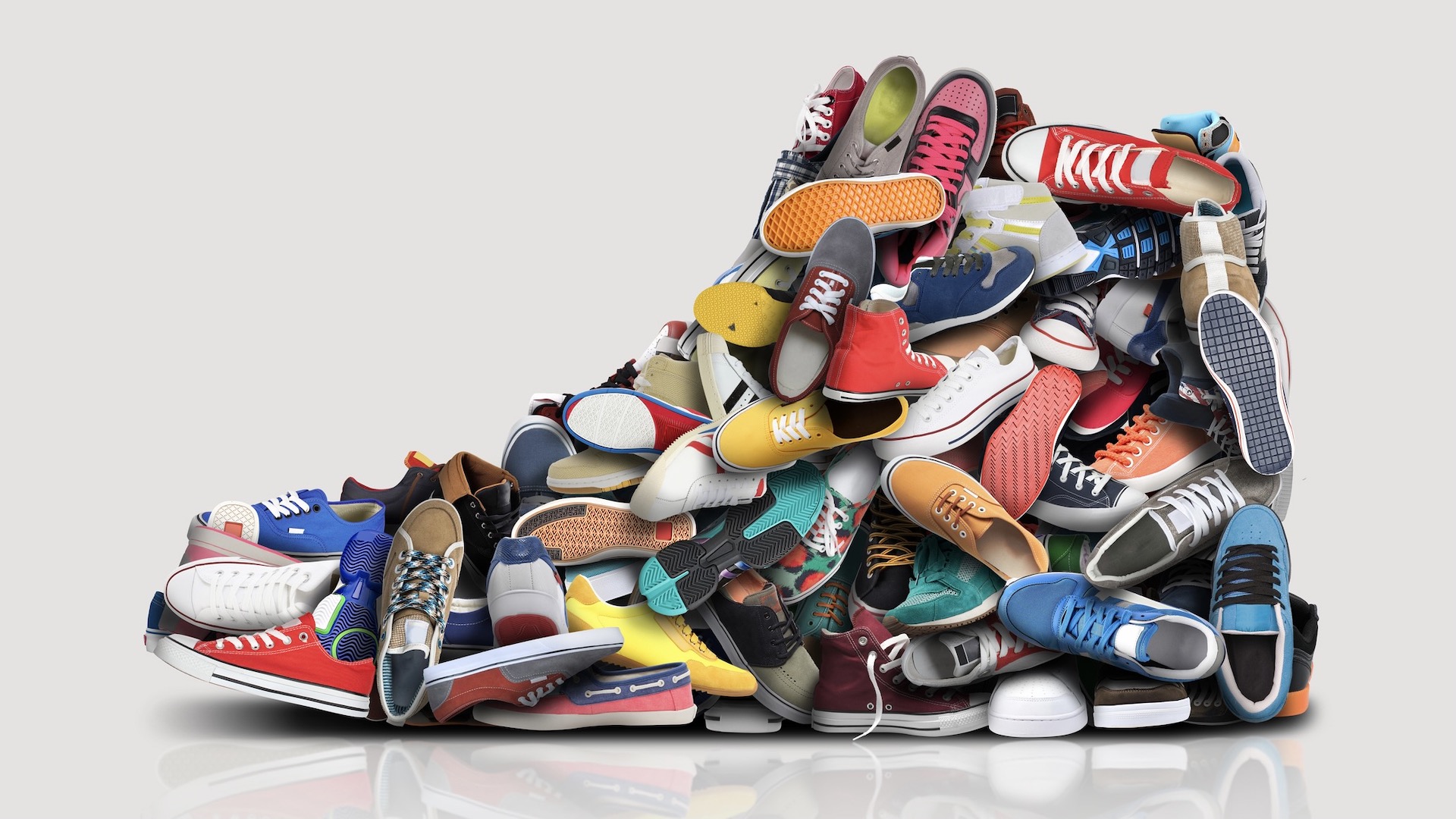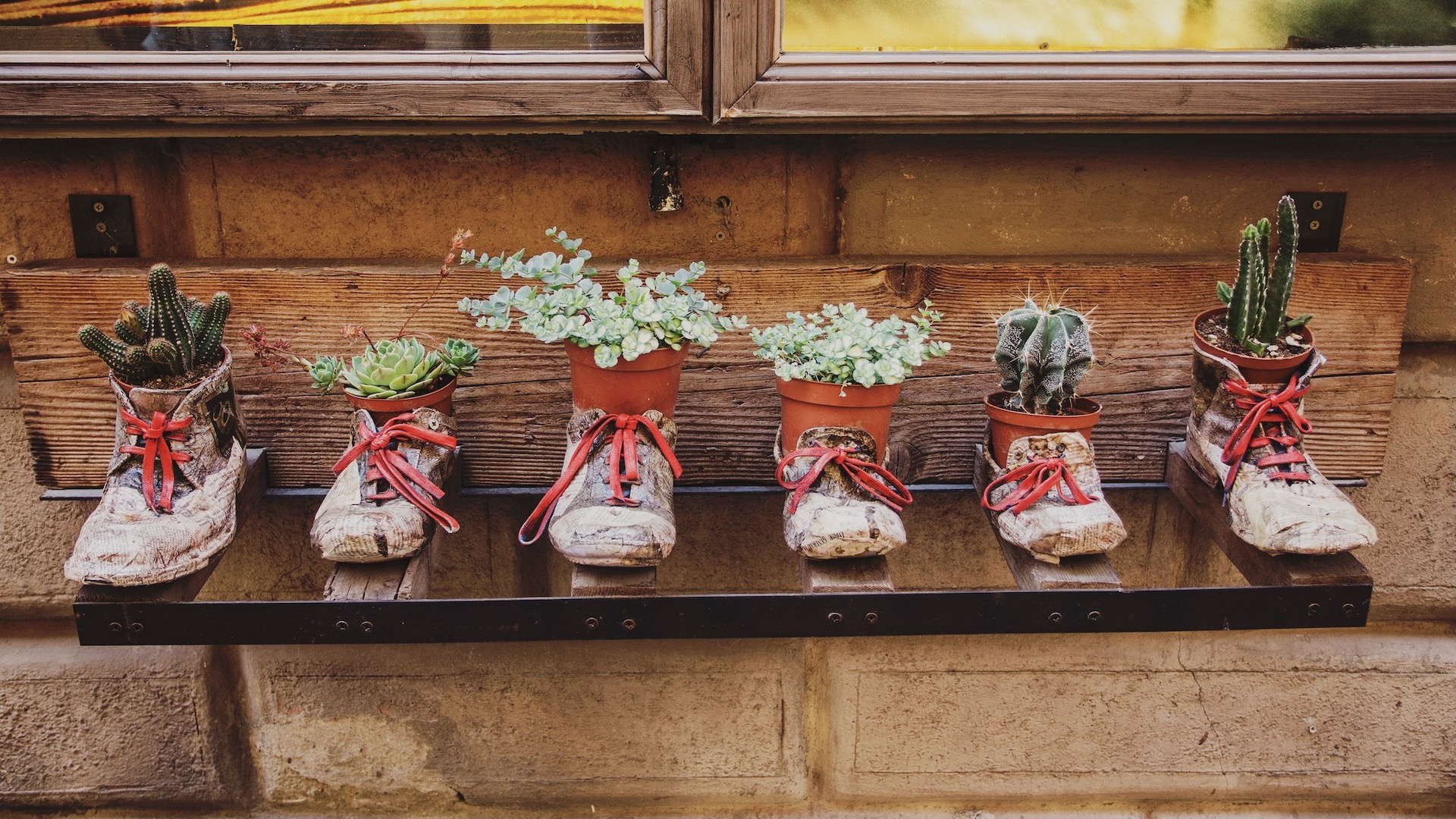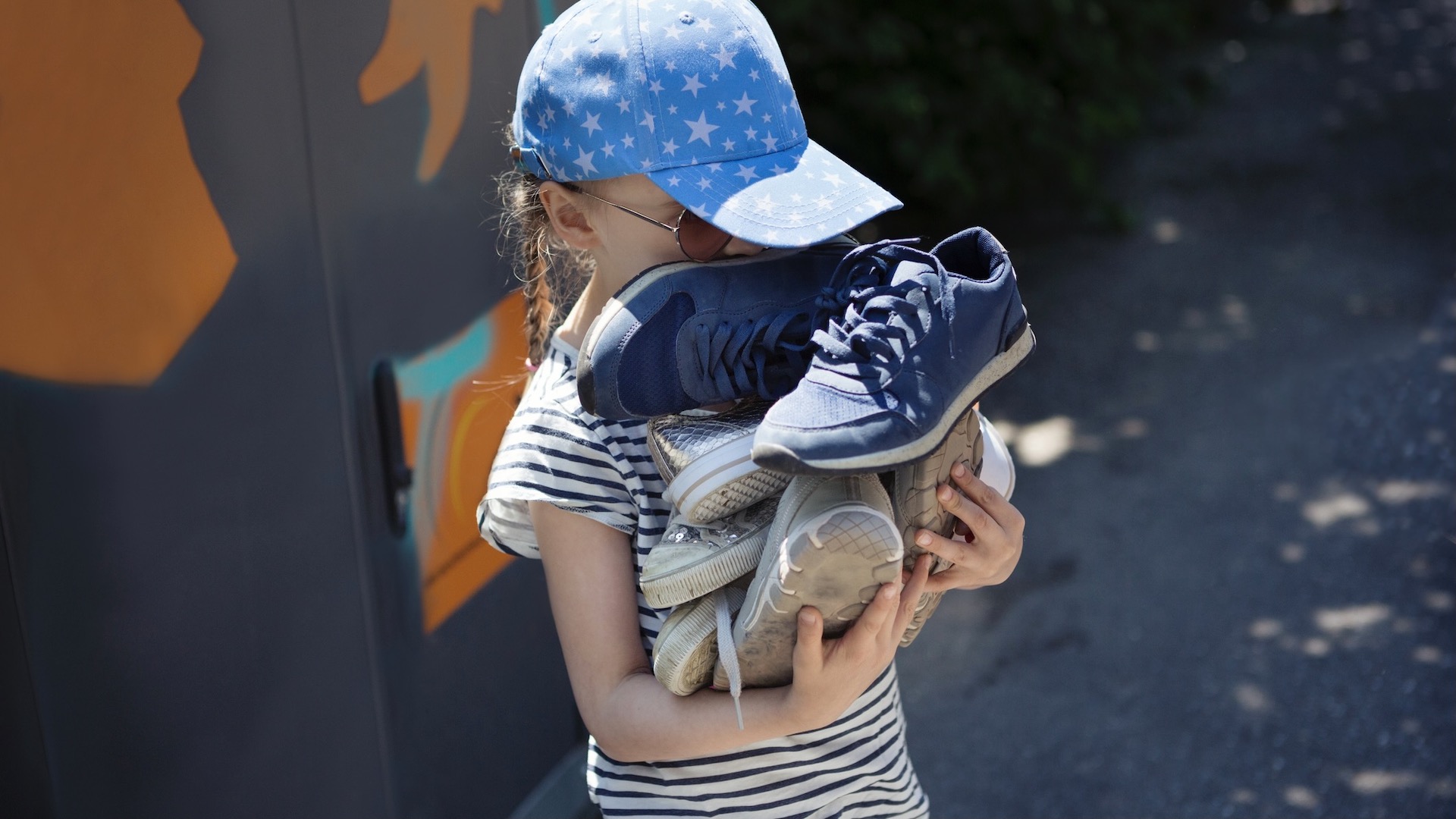What to do with old running shoes? A guide to reconditioning, recycling and buying sustainably
Where can I recycle or donate my worn out running shoes? And how to think more sustainably when buying footwear

If you are a keen runner, you will most likely have a cupboard or shelves full of running shoes in various states of wear and repair. Knowing when to replace your running shoes is a good idea to ensure you are wearing footwear that will keep you safe and comfortable.
But what do you do with old running shoes once they are past their best? One good tip is to try to re-use the running shoes for other purposes. If they are past their best for running, how about using the shoes for gardening or easy-going dog walking?
You may find that old running shoes have a longer life if you wear them for other purposes afterwards. Or you could get creative with old running footwear, such as making them into plant holders.
The point is that the longer we can use, make do and re-use clothing and footwear, the better it is for the environment.

Can you repair footwear?
It's not always easy to repair running shoes. It's a bit different for repairing the soles of many hiking boots, but running shoes are normally designed in such a way that resoling and repair is tricky.
However, it's worth looking on-line for running shoe repair services in case they can offer a solution for your best trail running shoes.
There are brands that offer reconditioning services, such as Vivo Barefoot, which has a service called ReVivo. This repairs and re-sells old and unwanted Vivo shoes, providing lower priced options with a reduced environmental impact.
Advnture Newsletter
All the latest inspiration, tips and guides to help you plan your next Advnture!
It is worth checking with various running shoe brands to see if they have repair and reconditioning options.
Buy sustainably in the first place
In a world in which consumers increasingly demand more sustainable options, some brands are selling running shoes with a pledge that they are more environmentally friendly. For example, On, the Swiss shoe company, sells a Cyclon shoe subscription that promises to be a closed-loop system. Cyclon is said to be a 100% sustainable shoe.
The shoes are made from castor beans and runners never own the shoes. You run in the footwear, return it when worn out and you get another pair. The old shoes are recycled to make another pair. The cost is £25 ($29.99) per month.
Salomon’s new Index.01 shoe is sold worldwide and is claimed to be a “circular life-cycle” shoe. As long as consumers send it back, partners of Salomon will recycle the TPU and polyester into raw materials for use in other products.

Recycle old running shoes
Another option is to recycle your old running shoes. However, this is a complicated topic. Footwear is made of many different parts and these are usually stitched or glued. So, it is not that easy or practical to recycle old running shoes.
It’s also worth noting that you should resist simply throwing your old running footwear in the bin. If the shoes end in landfill they will take a very long time to decompose. Worse still, they may leach plasticisers, heavy metals and other toxic chemicals, which are all bad for the environment.
This is why most “recycled” shoes and clothes are sent to places to be reused.
It's worth considering the fact that a running shoe that seems worn out to you, doesn't necessarily mean it’s worn out to someone else.

Recycle schemes that donate old running shoes
Donating your old running shoes, so long as they are still useable, is a great form of recycling. There are some general organisations that will accept outdoor and fitness clothing and footwear – and ensure it ends up being re-used by other people.
In the UK, you can donate unwanted clothes and gear to ReRun Clothing. They sell the items and use the profits to support the wider running community.
Rohan’s Gift Your Gear scheme allows you to donate pre-loved, usable outdoor clothing and equipment. The donated items are used to enable someone who might never have had the opportunity before, to have life changing experiences in the great outdoors.
There are some stores, such as Runners Need, that work with a company called SOEX to give your old running shoes a new life and keep them out of landfill. You drop off the old running shoes in recycling bins.
The shoes are then sent to SOEX, which inspects them and sorts them into categories based on the condition they’re in. The best-quality shoes are then sent around the world to be reused, while others are repackaged and sent to secondhand markets in different countries.
Note that it's worth asking your local sports and running stores to see if they offer their own recycling schemes.
In the US, programmes include One World Running, which collects, washes and sends sports shoes, along with t-shirts, shorts, medicine and school supplies to developing countries.
Soles4Souls also collects and distribute shoes and other clothing to people who need them.
The company I:CO provides recycling services for brands in the US, partnering with brands such as Asics and Columbia to collect unwanted shoes and clothing in return for vouchers.
Some brands also accept old running shoes. Nike’s worldwide Reuse-A-Shoe allows people to drop off “gently worn footwear and apparel” at participating local Nike stores for recycling or donation.
Sadly, the scheme is not available as a drop-off programme in the UK since Brexit although it is possible to collect a recycling bag from Nike stores, in which you can send their old shoes to one of the Belgian distribution centres.
TerraCycle‘s Zero Waste Box system is another option. You can order a box and fill it with shoes to be recycled.
There are a number of options of what to do with old running shoes and it's worth investigating them to ensure you don't simply thrown then in the waste bin and fill up landfill sites.

Fiona Russell is a widely published adventure journalist and blogger, better known as Fiona Outdoors. She is based in Scotland and is an all-round outdoors enthusiast with favorite activities including trail running, mountain walking, mountain biking, road cycling, triathlon and skiing (both downhill and backcountry). Aside from her own adventures, Fiona's biggest aim is to inspire others to enjoy getting outside and exploring, especially through her writing. She is also rarely seen without a running skort! Find out more at Fiona Outdoors.
